What is Waterproof? Clear Definition And Key Differences Guide
Did your package ever get wet in the rain? Do you worry your labels will get ruined if they get wet? Keeping things safe from water is very important. It helps your items arrive in great condition and makes your brand look professional.
This article will explain the meaning of waterproof in simple terms. We will show how “waterproof” is different from “water-resistant.” You’ll also learn why this distinction is important for items like packaging and labels, such as those you might find at Packlove.
1. Understanding “waterproof”
What is the precise definition of waterproof? Simply put, “waterproof” means something stops all water. Water cannot go through it. No water gets in because the material acts like a wall against water. It completely blocks water.
Imagine a strong plastic bag with no holes. If you put water in it, the water stays inside. If you put an item in that bag and then put the bag in water, the item inside stays dry. That’s waterproof. The material’s properties are key here; it offers a high level of protection against water entry due to its excellent moisture barrier qualities.
This isn’t just about a little protection. It means the material itself does not let water pass through. Understanding this helps you see why some products, like certain types of mailers or labels, are so good at keeping things dry.
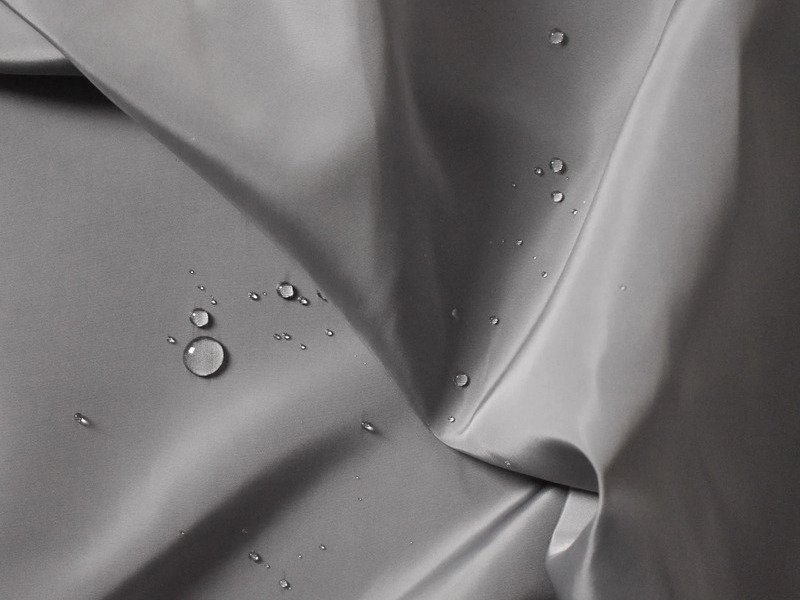
2. Waterproof vs. water-resistant vs. water-repellent: What’s the difference?
People often confuse these terms, so understanding the key differences between waterproof, water-resistant, and water-repellent can save you a lot of trouble.
- Waterproof: As we said, waterproof means the best protection. It stops all water. Think of rubber boots. You can stand in a puddle, and your feet stay completely dry. The material is designed to block water.
- Water-resistant (or “showerproof”): This term means the item can handle a little bit of water. Think of light rain or a small splash. But if there’s a lot of water, or if it stays wet for a long time, water will eventually get through. A light jacket might be water-resistant. It’s okay for a quick, light shower, but not for a heavy storm.
- Water-repellent: This means the surface of the material has a special coating (e.g., plastic coating). This coating makes water drops bead up and roll off, like water on a duck’s back. However, this coating can wear off over time or with use. Also, it doesn’t usually protect places like seams (where parts of an item are sewn or joined together). Some sprays make shoes water-repellent; water rolls off at first, but the shoe itself might not be waterproof.
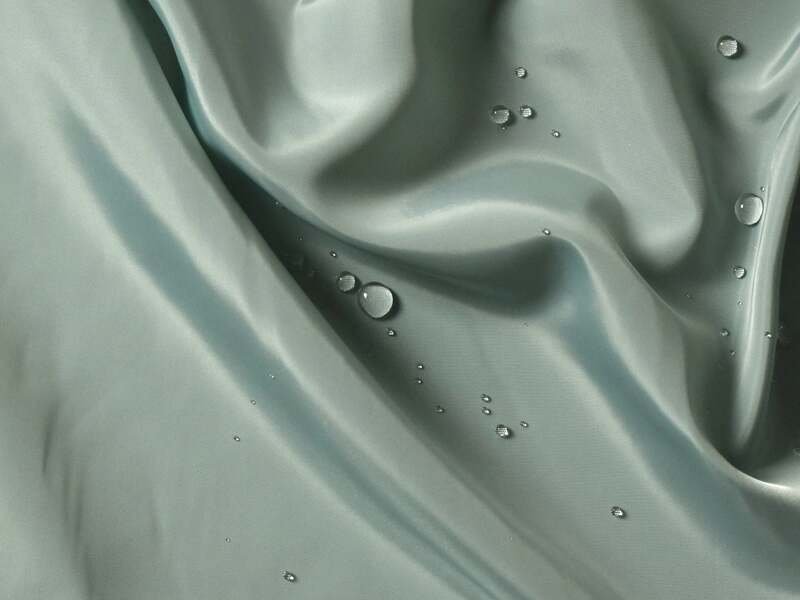
Here’s a simple table to show the differences:
| Feature | Waterproof | Water-resistant | Water-repellent |
|---|---|---|---|
| Water stops? | Yes, all water | Some water, for a short time | Water rolls off surface |
| Best for | Heavy rain, long exposure to water, staying very dry | Light rain, small splashes, brief wetness | Very light mist, quick spills |
| Example | Rubber boot, a good poly mailer (a shipping bag made of plastic), vinyl stickers (stickers made from durable plastic) | Light jacket, some paper tags | Spray on fabric, some umbrellas |
Understanding these differences helps you choose the right product. For example, if you need a label for a drink bottle that will be in a cooler, you need a waterproof vinyl sticker, not just a water-resistant paper one.
3. How are things made waterproof?
So, how do things get this amazing ability to stop water? It’s not magic, but rather straightforward science! Here are a few ways:
- Special materials: Some materials are naturally like a wall to water. Their composition just doesn’t let water through. Examples include rubber, many plastics like the polyethylene used for Packlove’s poly mailers or the PVC (polyvinyl chloride) labels (labels made from a type of strong plastic also known as vinyl).
- Packlove insight: We carefully select plastics for our poly mailers and vinyl stickers because they are excellent at stopping water. This ensures your products are protected.
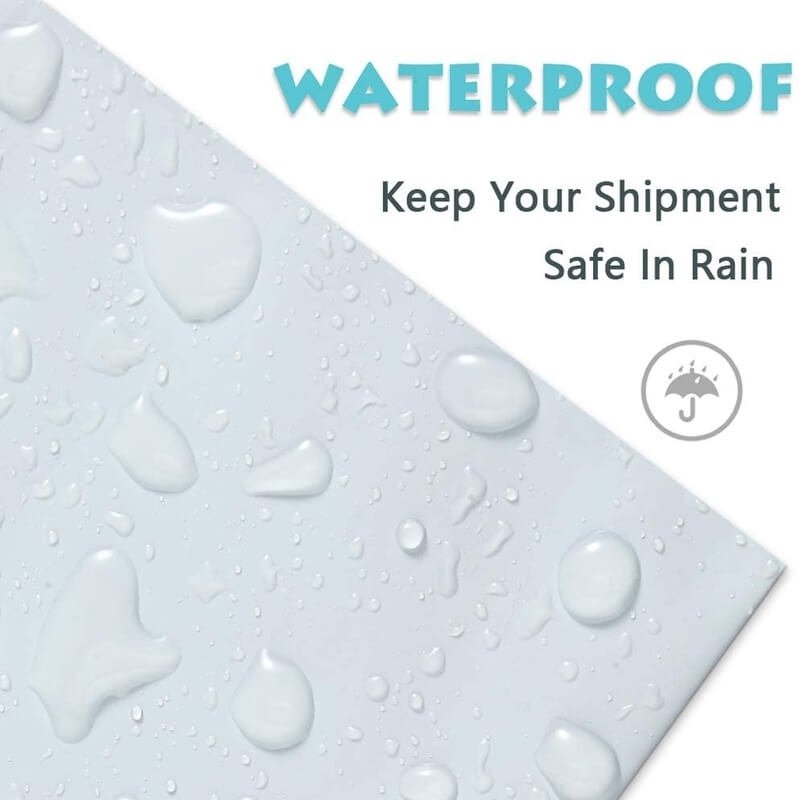
- Coatings and layers (laminates): You can also make something waterproof by adding a special layer on top. This is often done with materials that aren’t waterproof on their own, like paper. An example is a thin plastic film glued onto paper, which is what laminated paper (for tags/cards) is – paper with a protective plastic coating. This plastic protective coating helps shield the paper from water.
- Tight weaves and good making (construction): For fabrics especially, some are woven very, very tightly. This tight construction makes it much harder for water to find a way through.
- Sealed seams: When items like bags or raincoats are made, the pieces are often sewn together. Sewing creates tiny holes. For something to be truly waterproof, these holes must be covered. This is done using sealed seams, where special tape or glue is applied over the stitching to block any water.
- Briefly on “breathable waterproof”: You might hear about “breathable waterproof” materials, especially for activewear. These clever fabrics stop rain from getting in but let water vapor (like sweat) out. This is very advanced and mostly for clothing.
4. Everyday waterproof items
You probably use or see waterproof items every day without even thinking much about it! Here are a few common examples:
- Clothes: raincoats, rubber boots, some winter gloves.
- Things we use: umbrellas, tents for camping, many phone cases that say “waterproof.”
- Around the house: some shower curtains, waterproof mattress protectors.
- Packaging: Some packaging is also made to be waterproof. This is especially important for protecting things when they are shipped or if they might be stored in damp places. Think about those sturdy plastic mailers that protect your online orders – many have excellent weather resistance characteristics.
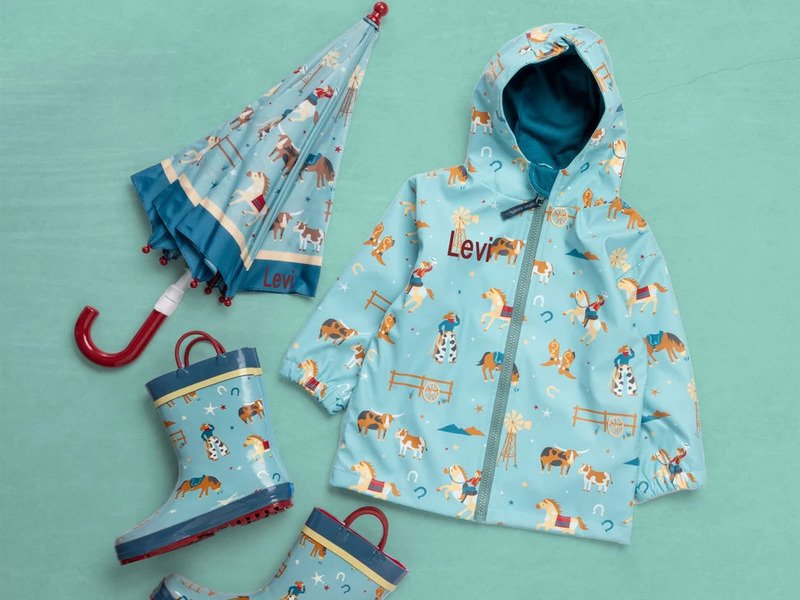
5. Why waterproof matters for your products, packaging, and labels
Choosing waterproof options isn’t just about being careful; it’s smart for your products and your brand. Here’s why it matters:
- Protecting what’s inside: This is the most obvious benefit. Waterproof packaging, like poly mailers from Packlove, is key for protecting shipped items from water damage. Rain, snow, or accidental spills during delivery won’t ruin your goods. This ensures your items arrive safe, dry, and in perfect condition, leading to happy customers and fewer returns or complaints. Knowing how to choose packaging that protects from rain is crucial for e-commerce.
- Packlove insight: We know that when you ship something, you want it to arrive perfectly. Our waterproof packaging options help achieve that.
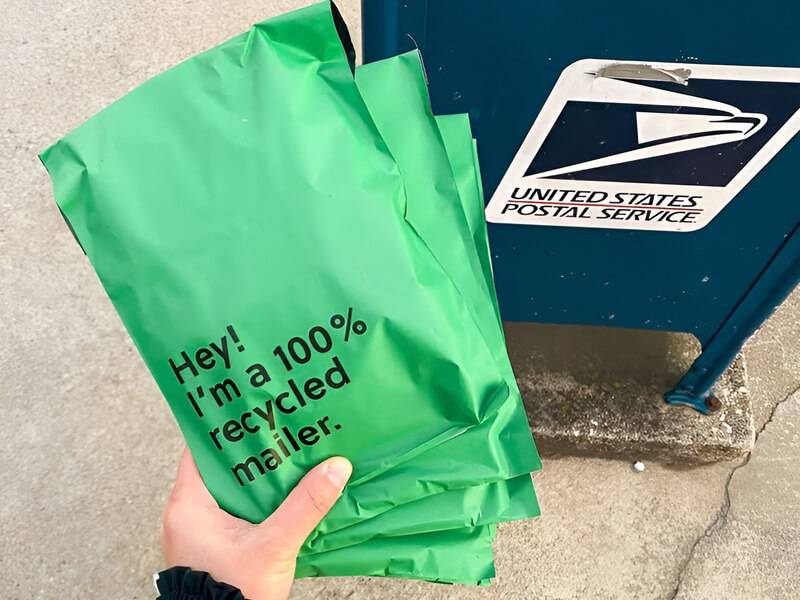
- Making sure labels last: Labels on products that might get wet need to be tough. Think about shampoo bottles, food jars that go in the fridge, or outdoor equipment. Waterproof labels, like vinyl stickers or PVC labels from Packlove, are the best materials for labels on products exposed to moisture. They won’t fall apart, tear, or have the print wash off if they get wet. This means important information (like your brand name, product ingredients, or instructions) stays clear and readable. The label stays on, and the product continues to look good.
- Your brand’s look (professionalism): Imagine receiving a package that’s soggy and torn, with a label that’s peeling off or smudged. It makes the brand look unprofessional and careless. Waterproof packaging and labels help your brand maintain a polished, professional look, right from dispatch to the customer’s hands. Consequently, high-quality, durable packaging and labels build customer trust in your brand. It shows you care about the details and their experience.
- Durability (toughness): Waterproof materials like plastic are often stronger and more resistant to tearing than non-waterproof alternatives, even when they are not wet. This inherent toughness of the material offers extra protection. This allows the package or label to withstand the bumps and knocks of shipping and handling, ensuring it looks good for longer.
6. Packlove solutions: Waterproof options for your needs
At Packlove, we understand how important it is to keep your items dry and your labels looking great. That’s why we offer several waterproof and water-resistant options. Here’s Packlove’s guide to the waterproof features of our packaging and labels:
- Poly mailers: Our poly mailers are strong plastic bags designed for shipping. The plastic material itself stops water effectively. When you seal them properly, they provide excellent protection for your items against rain, snow, and spills during transit. A common question is, “are poly mailers waterproof for shipping products?” The answer is yes; the material is specifically designed for this purpose. They are strong, inherently water-blocking, tear-resistant, and lightweight. Ideal for shipping clothes, books, documents, fabrics, and many other items that need to stay dry. Packlove offers waterproof poly mailers in various sizes. Packlove tip: Always press the self-seal strip firmly across its entire length to ensure the best possible waterproof seal.

- Vinyl stickers & PVC labels: Packlove’s vinyl stickers and PVC (polyvinyl chloride) labels are made from durable plastic. This plastic material makes them fully waterproof. The print won’t smudge or fade, and the labels themselves won’t tear, disintegrate, or peel off when exposed to water or moisture. They are completely waterproof, very durable, have strong adhesive, and vibrant print quality that lasts. Perfect for product labels on bottles (drinks, cosmetics, sauces), jars, items used outdoors (e.g., equipment, car bumpers), or any sticker that needs to withstand wet conditions. Packlove tip: For the best adhesion, apply these stickers to a clean, dry, and smooth surface.
- Laminated paper tags/cards: We know that standard paper gets damaged easily by water. However, Packlove’s laminated paper (for tags/cards) options offer a good level of protection. These tags and cards have a thin plastic coating applied to their surface. This lamination makes them water-resistant. They can handle some moisture, like light rain, splashes, or damp hands, much better than plain paper. While they are not designed to be soaked in water for long periods like vinyl, they provide good durability for many common uses. They are stronger and more durable than plain paper, protect print from smudging, and resist moisture and tearing to a good degree. Excellent for hang tags on clothing, product information cards, business cards, or any tag that needs to be a bit more robust and handle occasional exposure to moisture.
This guidance on selecting Packlove items with the right water protection should help you. We have availability of custom waterproof poly mailers and stickers at Packlove, so you can brand them too!
7. How to tell if something is truly waterproof
It’s important to know how to know if a label is truly waterproof or if a package will protect your goods. Here’s a quick checklist:
- Look at the label/description: Check the product information carefully. Look for the specific word “waterproof.” If it says “water-resistant” or “water-repellent,” remember that means less protection. If you need full protection against water, “waterproof” is the term you want. Look for and understand any symbols indicating waterproof or water-resistant properties, if present.
- Think about the material: What is the item made of? Materials like rubber, polyethylene (often used in poly mailers), and PVC/vinyl (used for durable stickers and some labels) are generally waterproof by nature. If it’s standard paper or untreated fabric, it’s likely not waterproof.
- Packlove example: Packlove’s vinyl stickers are waterproof because vinyl itself is a non-porous plastic material.
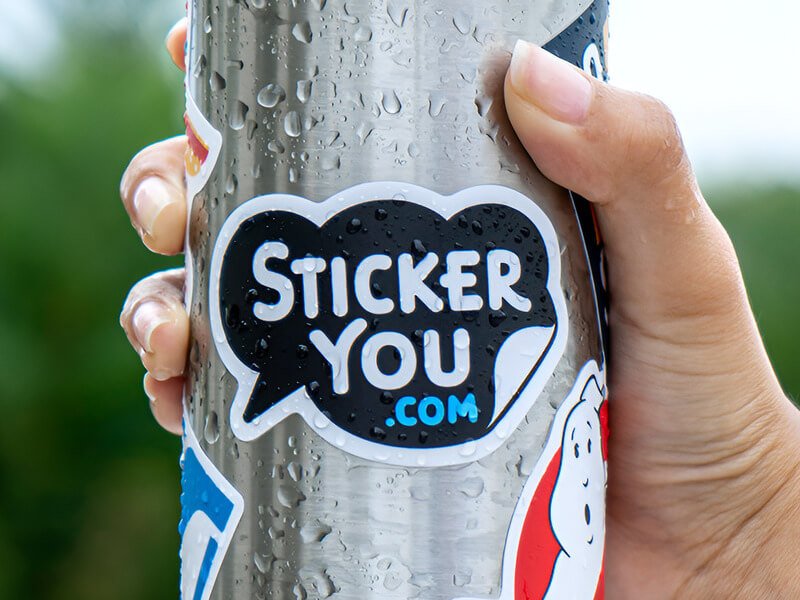
- Check how it’s made (especially for bags, outdoor gear): For items like bags or raincoats, look at the sealed seams. Are the seams (where pieces of material are joined) taped or welded? Are zippers covered with a protective flap, or are they special waterproof zippers? These details are crucial for overall waterproofness in constructed items.
- Waterproof ratings (simplified): Sometimes, you might see codes like “IP67” or “5 ATM” on electronics or watches. What does a waterproof rating mean for bags or other items? These are technical ratings that indicate the level of water protection. Higher numbers in IP codes (like IP68 vs IP67) generally mean better protection. For most packaging or labels, a statement from a trusted supplier like Packlove that a product is waterproof, combined with the use of appropriate materials (like vinyl or strong plastic), is often sufficient information.
- Ask the seller: If you’re ever unsure, the best thing to do is ask the company that sells the product. At Packlove, we are always happy to answer your questions about the waterproof properties of our packaging and labels.
8. Frequently asked questions (FAQs)
8.1 Is “waterproof” the same as “water-sealed”?
Yes, most of the time these terms mean the same thing. If a product says it is ‘fully water-sealed,’ it means its construction is designed to be waterproof and completely blocks water. What makes something fully water-sealed is that all entry points for water have been addressed.
8.2 Can my custom stickers be waterproof?
Absolutely! Custom stickers made from the right material can be waterproof. For example, vinyl stickers from Packlove are an excellent choice because vinyl is a type of plastic that doesn’t absorb water. The print on them will also be durable. You can order your custom waterproof vinyl stickers here on Packlove!
8.3 Are all poly mailers waterproof?
Most poly mailers, including those offered by Packlove, are made from polyethylene plastic. This material itself is waterproof and provides excellent protection against rain and moisture when the mailer is properly sealed. So, yes, our poly mailers are designed to be waterproof for shipping products. Check out Packlove’s poly mailers here!
8.4 What does “impermeable to water” mean?
“Impermeable to water” is another way of saying waterproof. ‘Impermeable’ means that water cannot pass through the material. So, if something is described as ‘impermeable to water,’ it means it completely blocks water. This term is synonymous with waterproof.
8.5 If a fabric has a coating, does that make it waterproof?
A coating (e.g., plastic coating) on a fabric can make it waterproof, or it might just make it water-resistant. It really depends on the type and thickness of the coating. Some advanced coatings create a fully waterproof barrier, while others offer a lesser degree of protection. It’s always best to check the product’s specific description to understand its level of water protection.
Have more questions or need specific advice for your project? The Packlove team is here to help you find the perfect packaging and labeling solutions!
Explore more:
Waterproof means an item is designed to completely block water. It’s a higher level of protection than “water-resistant” (handles a little water) or “water-repellent” (water rolls off the surface). Understanding these terms means you can make better choices for your needs.
Whether you’re protecting personal items or ensuring your business products arrive safely and look professional, choosing the right level of water protection matters. Waterproof packaging and labels help safeguard your products and maintain your brand’s quality image. Indeed, understanding the concept of “waterproof” helps you choose packaging wisely.
And when you need reliable protection against moisture, remember Packlove has great options like our durable poly mailers and long-lasting vinyl stickers to help. Ready to ensure your products stay dry and your brand looks its best? Contact Packlove for a quote on your custom packaging and label needs!






















